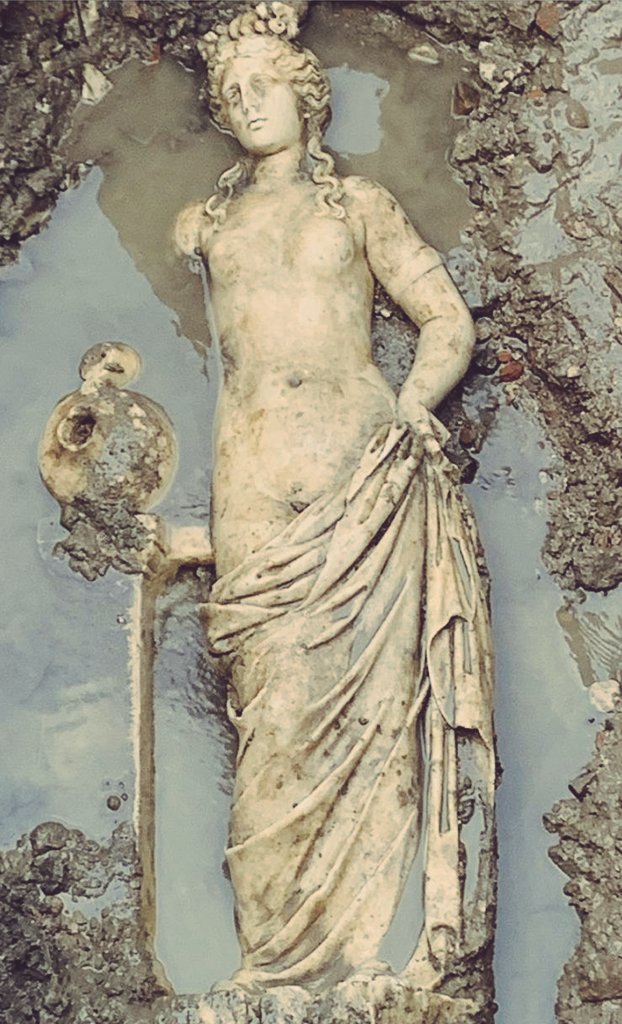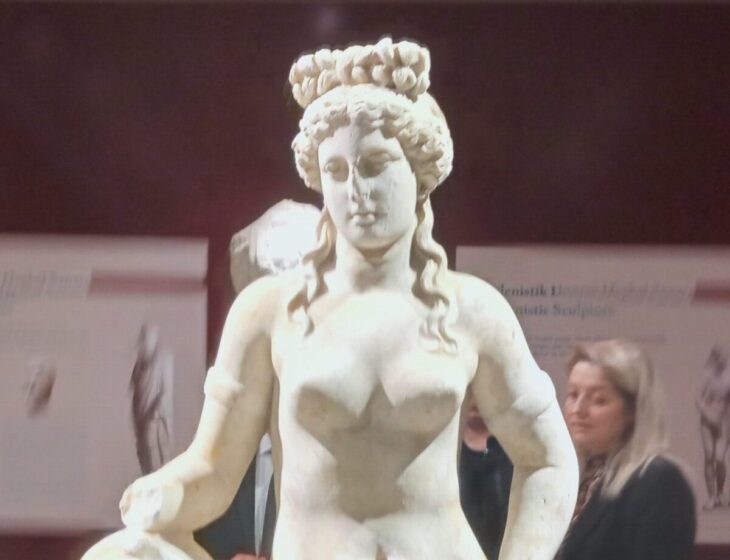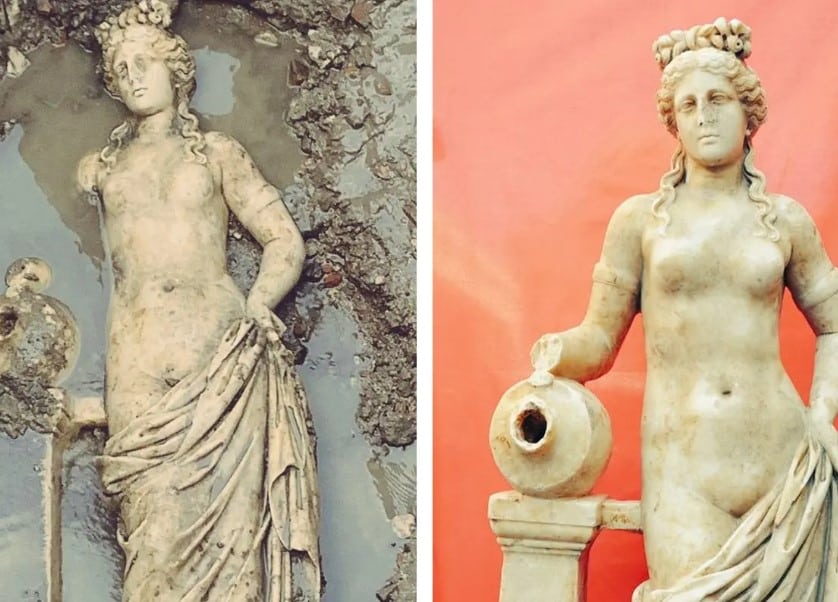In September 2023, archaeologists uncovered a remarkably well-preserved marble statue in the ancient gymnasium of Amastris (modern-day Amasra) on Turkey’s Black Sea coast. Dating back to the 2nd century AD, this striking sculpture, buried for nearly 2,000 years, offers a rare and significant glimpse into the artistic and religious practices of the Roman era.
A Depiction of Aphrodite
Initially thought to depict a water nymph, further analysis suggests the figure may actually represent Aphrodite, the Roman goddess of love and beauty. The statue’s graceful form, serene expression, and symbolic posture align with common representations of Aphrodite in ancient art, reflecting ideals of feminine beauty and divine femininity. This discovery highlights the significance of goddess worship in Roman culture, particularly in coastal cities like Amastris.

Roman Artistry Revealed
The exquisite craftsmanship of the statue provides insight into Roman sculpture during the 2nd century AD. The fine detail and lifelike quality of the marble reflect the high level of artistic skill employed by Roman sculptors, showcasing their ability to blend realism with idealized beauty. Such works were not merely decorative; they held religious significance, symbolizing devotion to the gods and reinforcing cultural values.

Amastris: A Cultural Hub of the Roman Era
Amastris, a once-thriving city on the Black Sea coast, played a key role in Roman and Hellenistic history. The discovery of this statue reinforces Amastris’s importance as a center of culture, religion, and art. The representation of Aphrodite links the city to the broader Roman religious world, where the goddess was revered across the empire. This find underscores the cultural continuity of the region, even as it was influenced by the expanding Roman Empire.

Conclusion: A Connection to the Ancient World
Now displayed at the Amasra Museum, the statue offers valuable insights into the artistic and religious heritage of ancient Amastris. Its discovery not only deepens our understanding of Roman sculpture but also reinforces the cultural significance of Amastris as a city shaped by both Hellenistic and Roman influences. This stunning statue serves as a testament to the lasting impact of ancient religious iconography and the artistic traditions of the Roman world.

